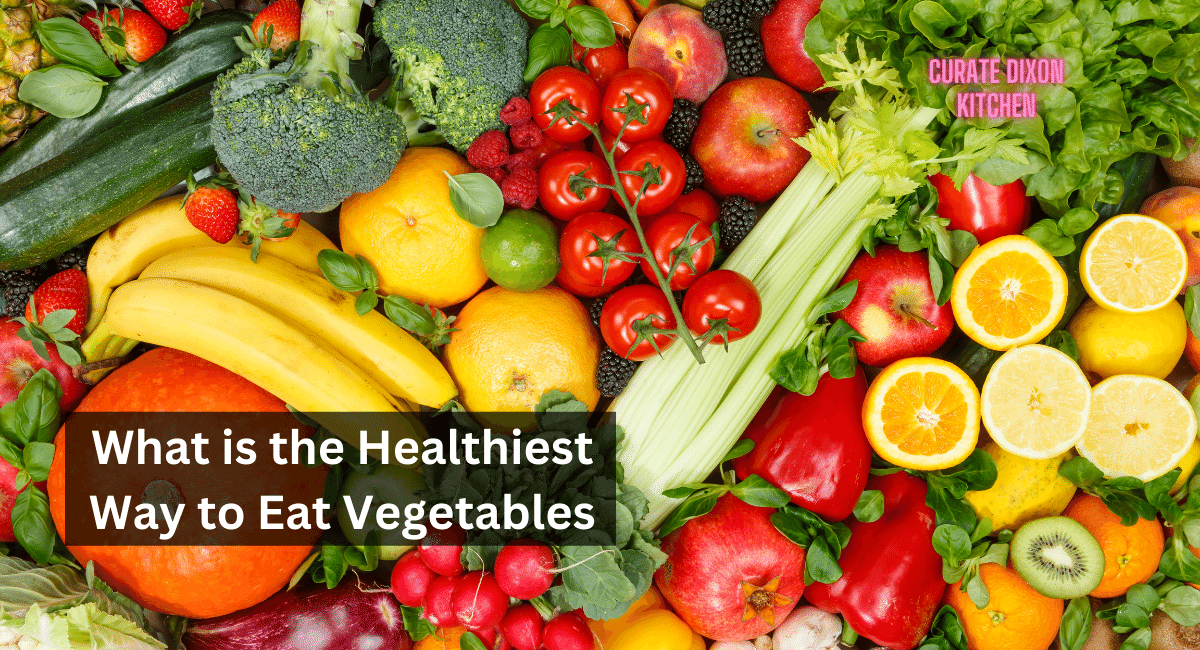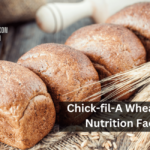Vegetables are often hailed as nutritional powerhouses packed with essential vitamins, minerals, fiber, and antioxidants. They are an integral part of a balanced diet and play a crucial role in maintaining good health. But with the myriad of vegetables and cooking methods available, what is the healthiest way to eat vegetables? This extensive guide will explore every aspect of vegetable consumption, from the nutritional benefits to the best cooking techniques, portion control, and more. By the end, you’ll thoroughly understand how to make the most of nature’s wonders in your daily diet.
The Nutritional Benefits of Vegetables
1: Vitamins in Vegetables
Vitamin A
Carrots, sweet potatoes, and spinach are excellent sources of vitamin A. Maintaining good vision and a robust immune system is crucial.
Vitamin C
Broccoli, bell peppers, and citrus fruits provide ample vitamin C, which supports skin health wound healing, and acts as a powerful antioxidant.
Vitamin K
Vitamin K is widely available in vegetables like kale and spinach and is essential for the growth of strong bones and normal blood coagulation.
2: Fiber in Vegetables
Soluble Fiber
Oats, Brussels sprouts, and beans contain soluble fiber that aids digestion and helps lower cholesterol levels.
Insoluble Fiber
Whole grains and cauliflower provide insoluble fiber, promoting regular bowel movements and a healthy gut.
3: Antioxidants in Vegetables
Flavonoids
Berries, onions, and apples are loaded with flavonoids, powerful antioxidants that combat oxidative stress.
Lycopene
Tomatoes are renowned for their lycopene content, which may reduce the risk of certain cancers.
Different Types of Vegetables and Their Benefits
1: Leafy Greens
Spinach
Spinach is a nutrient powerhouse packed with iron, vitamins, and antioxidants, supporting overall health.
Kale
Kale is a highly nutritious food rich in vitamins, minerals, and phytonutrients.
2: Cruciferous Vegetables
Broccoli
Broccoli is a cancer-fighting superstar, containing sulforaphane, a potent anti-cancer compound.
Cauliflower
Cauliflower is a versatile vegetable, rich in vitamin C and fiber, aiding digestion and immune support.
3: Root Vegetables
Carrots
Carrots are well known for their high vitamin A content, promoting eye health and immune function.
Sweet Potatoes
Sweet potatoes are a complex carbohydrate source, offering sustained energy and a wealth of nutrients.
The Best Cooking Methods for Vegetables
1: Raw vs. Cooked Vegetables.
Raw Vegetables:
Eating vegetables raw can preserve their natural vitamins, minerals, and enzymes. However, some nutrients are more bioavailable when cooked.
Cooked Vegetables:
Steaming, boiling, or roasting vegetables can make certain nutrients, like lycopene in tomatoes or beta-carotene in carrots, more accessible to the body.
2: Steaming
Health Benefits
Steaming vegetables preserves their nutrients, making it one of the healthiest cooking methods.
Steaming Techniques
Learn the art of steaming for perfect vegetables every time.
3: Roasting
Flavorful Roasting
Roasting vegetables with olive oil and seasonings can elevate their taste and texture.
Nutrient Retention
Discover how roasting can retain vital nutrients while adding a delightful crunch.
4: Stir-Frying
Quick and Delicious
Stir-frying vegetables in minimal oil is a quick and tasty way to enjoy them while preserving their crunch.
Stir-Fry Recipes
Explore a variety of stir-fry recipes that bring out the best in your veggies.
5: Soups and Stews
Nutrient-Packed Soups
Homemade vegetable soups and stews are a delightful way to savor multiple veggies in a single meal.
Soup-Making Tips
Learn the art of crafting delicious and nutritious soups and stews.
6: Salads
Salad Dressing Choices
Discover the healthiest salad dressing options to maintain a low-calorie count.
Creating Exciting Salads
Incorporate a variety of vegetables, fruits, and proteins to create salads that always stay exciting.
Portion Control
1: Importance of Portion Sizes
Balance is Key
While vegetables are healthy, overconsumption can lead to imbalances in your diet.
Portion Control Tips
Learn how to control your portions and maintain a well-rounded diet.
Maximizing Nutrient Absorption
1: Pairing with Healthy Fats
The Role of Healthy Fats
Discover how healthy fats like avocados and nuts can enhance nutrient absorption.
Delicious Combinations
Explore tasty pairings of vegetables and healthy fats that elevate your dishes.
The Health Benefits of Vegetable Consumption
1: Disease Prevention
Heart Disease
Vegetables are a key component of a heart-healthy diet since they can decrease cholesterol and blood pressure.
Diabetes
The fiber in vegetables helps stabilize blood sugar levels, making them a valuable asset in diabetes management and prevention.
Cancer
Certain vegetables, such as broccoli and cruciferous greens, contain compounds that may inhibit cancer cell growth.
2: Weight Management
Low-Calorie Density
Most vegetables are low in calories but high in volume, making them ideal for weight control as they promote a feeling of fullness.
High Fiber Content
Fiber-rich vegetables contribute to weight loss by curbing overeating and supporting healthy digestion.
The healthiest way to eat vegetables involves a combination of factors. Eating a diverse range of colorful vegetables, both raw and cooked and being mindful of portion sizes can help you reap the maximum nutritional benefits. Additionally, pairing your veggies with healthy fats can enhance nutrient absorption. By incorporating these strategies into your diet, you can ensure that you are making the most of these nutritional powerhouses.










